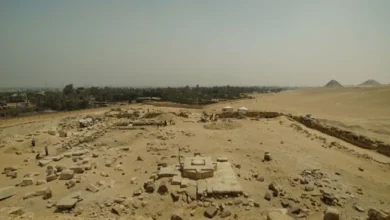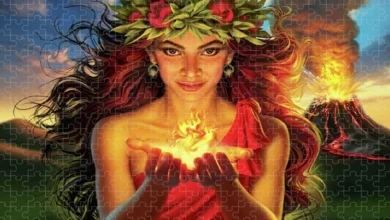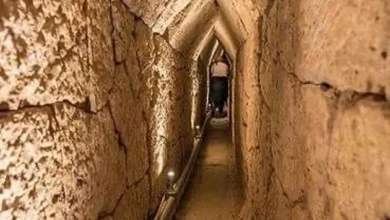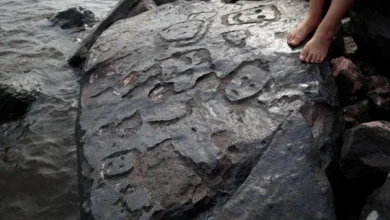Why did Chinese monks build a monastery over a precipice 1,500 years ago, and how did they manage it
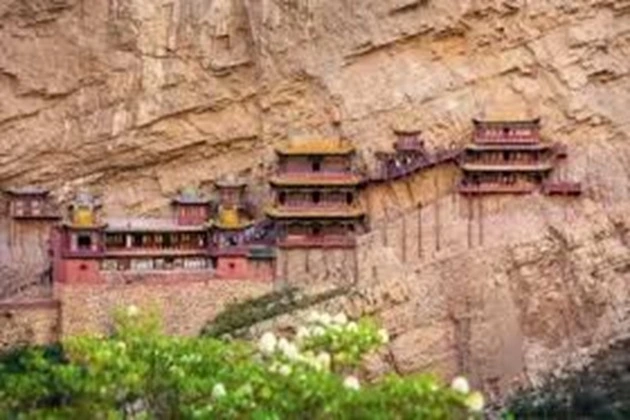
A real architectural miracle in China is a Hanging monastery hanging over a precipice. It is carved at a great height right into the sheer rocky wall of one of the five great mountains of China. This masterpiece is one and a half thousand years old. The question arises: How could the ancient monks build it because they did not have sophisticated equipment to deliver materials to a great height and work in such conditions? Let’s take a closer look at this incredible religious site.
Shelter for pilgrims away from the mundane
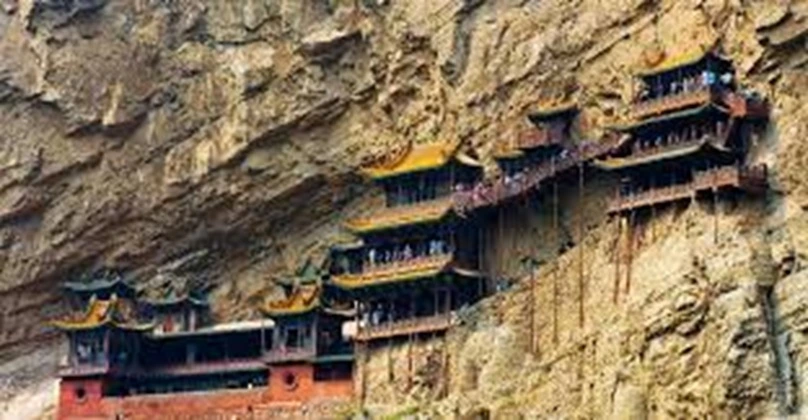
The miracle monastery is near the Chinese sacred mountain Hengshan, near Hunyuan. It looms over the local Jinlong Canyon.
It is known that the monastery was built back in 491 when the Northern Wei dynasty ruled these lands. The rulers of this state were the first in the history of China to adopt Buddhism and began to populate the desolate mountainous area with inhabitants. Temples and pagodas appeared here earlier than in other East Asian cities. The hanging Temple has become the main one of such buildings. There are simply no analogs to this building in terms of the complexity of its creation and splendor.
The ancient monastery, Xuankong Si, was built in this place and at such a height for a reason. From time immemorial, pilgrims traveled from the ancient capital of the Northern Wei dynasty, located near the Great Wall of the garrison city of Pingcheng (modern name—Datong), to the sacred Hengshan Mountain. Here, the travelers found shelter, allowing them to take a break on this long journey.
The monks decided to build a monastery at a high altitude for their convenience and that of pilgrims because the local Hun River usually flooded heavily.
The people who ventured into the hanging monastery must have had incredible courage. There were almost vertical stairs leading up. Later, the ascent was made more gentle, but the transitions were breathtaking.
It is believed that the Buddhist monk Liao Ran started the construction of the architectural complex.
Then, he was supported by Taoists (adherents of Taoism) who came to these parts to pray and meditate in solitude. The location of the monastery at a high altitude, away from the noise of people and all worldly things, was an ideal option for the monks, so everyone tried to build a monastery as quickly as possible to be at peace in unity with their gods.
As the centuries passed, the monastery improved and expanded. Century after century, he “hung” over the abyss unshakably, like the faith of these isolated people who preserved the traditions of the first generations of Eastern monks. In 1900, the monastery underwent a large-scale restoration during the Qing Dynasty.
The structure of the ancient monastery

It looks tiny, only from a distance. Inside, it becomes clear that the monastery is enormous. It houses more than 40 crazy rooms, halls, and pavilions. Like the group of buildings themselves, they are connected by a multitude of corridors and passageways. Visit. A F R I N I K . C O M . For the full article. The three levels and sections go in steps. The lowest elevation of this architectural marvel is 26 m above the ground, and the highest is 50 m.
The architectural masterpiece was interestingly erected: during the construction, all the rock depressions were used to the maximum, the first level stands on a brick foundation (I wonder how the material was brought up 1.5 thousand years ago?), and the rest were built using beams and supports that help the building to hold on. By the way, there is a version that initially had no wooden supports at the monastery levels, and they were added later – for insurance.
The monastery’s entrance gates have two traditional drum/bell towers. Inside, you can admire the magnificent figures of Buddhas and other gods of this religion, and the temple complex includes Buddhist, Taoist, and Confucian altars.
The Trinity of religions in the monastery over the Abyss
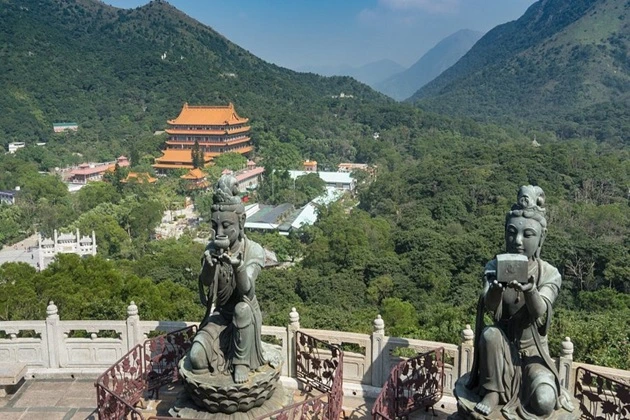
The sections of the hanging Temple symbolize the number three, which, according to numerology, is very important for these religions.
The first section, the lower brick section, belongs to the philosophy of Taoism and is called the “Three Lords.” They are compared with the main elements—sky, water, and earth. The second is Buddhist, and it is called the “Three Tenses” (“Trikala”), which implies the present, past, and future and the three corresponding Buddhas. The third, upper section is called the “Three Exercises.”
As you might guess, these are Taoism, Confucianism, and Buddhism, which were already mentioned above. On this monastery level, visitors can see sculptures of Lao Tzu, Confucius, and Shakyamuni Buddha (the founders of these three religions). In total, about 80 statues can be seen in the Hanging Monastery.
Tourists or pilgrims cannot explore every corner of the ancient monastery because some parts have not yet been restored, and it is dangerous to walk there.
Nowadays, the Hanging Monastery is still not considered the most reliable place. It requires significant repairs. Nevertheless, while he is “hanging” on the mountain, crowds of tourists and pilgrims continue to visit him. Of course, it will not be possible to retire and pray in silence in such conditions now, but you can experience unforgettable emotions here.
Chinese culture is closely intertwined with Eastern religions, and Tibet is, of course, the most important and mysterious religious and cultural location in this country and the world in general. Tibet has various mystical facts that cannot always be explained.

